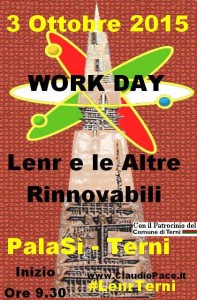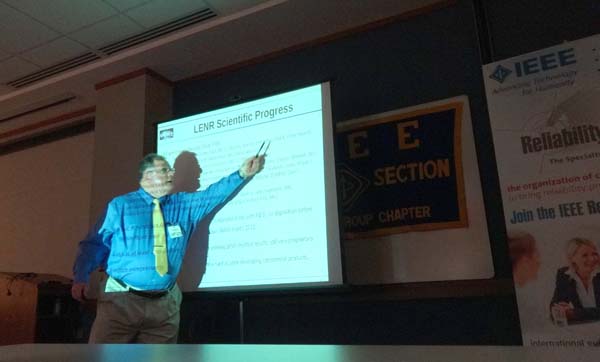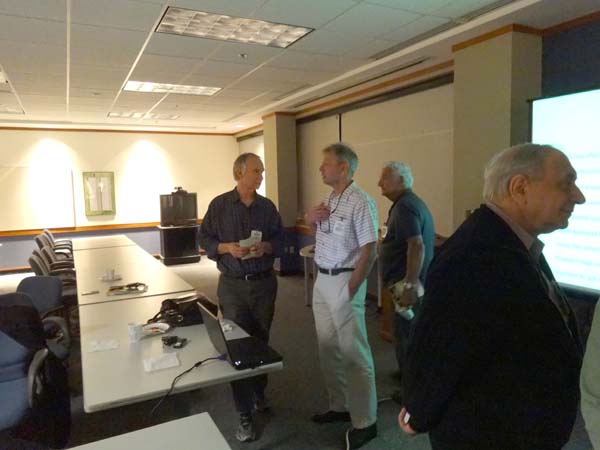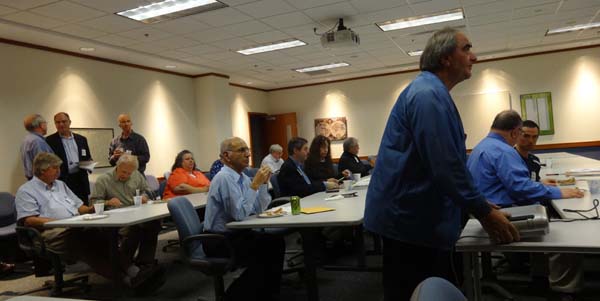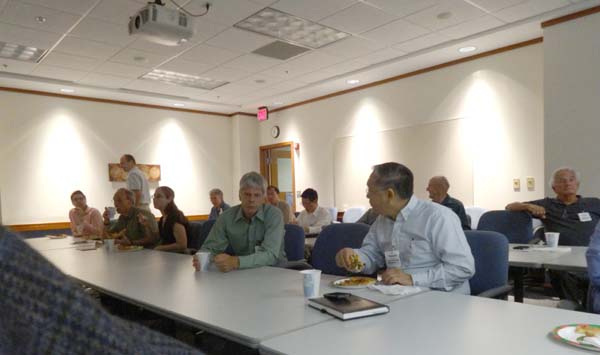Davids vs. Goliath
In A Race to Replace Hydrocarbons With Nuclear Fusion As The World’s Dominant Energy Source [.pdf]
by Douglas A. Pinnow, Ph.D.
There is only so much oil, coal, and natural gas remaining to supply the energy needs for humanity. What to do when it runs out? And perhaps more relevant: What should be done if a disruptive alternative energy source takes everyone, including the entrenched hydrocarbon industries, by surprise?
It’s unlikely that nuclear fission will become the replacement energy source of choice with the negative legacy of Chernobyl, Three-Mile Island, and Fukushima along with a limited supply of uranium that many view as analogous to limited oil supplies. Perhaps renewable energy sources like wind and solar will evolve to fill the gap when oil runs out. But, these are still “fair weather” sources because the energy that they produce cannot yet be economically stored on the vast scale required to supply the needs of the entire civilized world after dark and on windless days.
The another possibility on the horizon is fusion energy that might be produced by taming the power of the sun and by using plentiful fuel available from the seas – specifically, an isotope of hydrogen, known as deuterium, which can be extracted from normal water. However, recreating the sun in a box on earth has proven to be very problematic. This article is to report on a rather exciting race to be the first to commercialize the fusion energy alternative. The race participants include a well-funded but slow moving international consortium, the Goliath, and a number of nimble companies, the Davids, which are financed primarily by venture capital.
While fusion energy is not a hot daily topic for the publishing and broadcast media, it is, nevertheless, impressive that the world’s most expensive machine (presently projected to cost $16 billion) is currently being built in Cadarache, France to advance the prospects for fusion energy. This machine is called the ITER (International Thermonuclear Experimental Reactor) and, as can be seen in Figure 1, it is really big – the Goliath of the fusion energy research efforts

Figure 1. Construction site for the $16 billion ITER located in Cadarache, France (near Monaco) that is sponsored by seven participants; the European Union, India, Japan, China, Russia, South Korea, and the United States. The circular structure in the center-right is the footing for a 500 Megawatt hot fusion plasma reactor that is projected to become operational around 2027.
This massive project was launched as a Reagan-Gorbachev initiative in 1985 to consolidate the efforts being conducted by thousands of scientists around the globe to harness fusion energy using extremely hot gas plasmas contained in a large donut shaped reactor vessel. The temperatures in the plasma must reach approximately 100 million degrees Centigrade to duplicate the fusion reactions in the sun. This is so hot that it would melt all known materials. So, the strategy is to contain the plasma inside of an intense magnetic field that is suspended in free space within the donut.
The “E” in the ITER name clearly establishes this machine as an Experimental project. Its goal is limited – to sustain a fusion reaction for only eight minutes! If successful, there will still be years, if not decades of research required to perfect a viable power producing machine. To put this all into perspective, the French Nobel laureate in physics Pierre-Gilles de Gennes said of nuclear fusion, “We say that we will put the sun into a box. The idea is pretty. The problem is, we don’t know how to make the box.”
If this Goliath were the only contender in the race to replace hydrocarbons as the world’s preferred energy source, the race would, indeed, be a slow-motion event that might work to the benefit of established global energy and financial interests. No one would be concerned about the Goliath introducing a disruptive technology with an early and unexpected success.
But, things changed in 1989 when two chemistry professors at the University of Utah, Stanley Pons and Martin Fleischmann, held a press conference and announced to the world that they had succeeded in producing useful fusion energy inside of an inexpensive glass jar in their laboratory. The jar contained a rod of palladium metal with a surrounding platinum wire and both were immersed in heavy water (deuterium oxide, D2O). The palladium rod was connected to the negative terminal of a 12 Volt car battery and the platinum wire was connected to the positive terminal. It was reported that this simple set-up produced four times more energy than the electrical input from the car battery for sufficiently long periods that the only viable explanation could be a nuclear reaction.
Not surprisingly, such a potentially transformative and disruptive technology was attacked very hard from many quarters, including established energy and banking interests, and many scientists who were convinced that their hot plasma fusion approach (that is well funded by government agencies) is the only scientifically viable approach. The press dubbed the work of Professors Pons and Fleischmann “cold fusion”, and within a relatively short period of time (1992) a book was published by one of the most vocal opponents, John Huizenga, titled Cold Fusion: The Scientific Fiasco of the Century. He persuasively attacked cold fusion on the basis that Pons and Fleischmann’s work was difficult to reproduce and it didn’t result in the harmful radiation from energetic neutrons that was expected based on known results from hot plasma fusion reactions.
By the way, elimination of harmful radiation would be a wonderful result if it could be achieved. But, character assassination by discrediting those who reported positive results was a stronger factor during the early years after the press conference announcing cold fusion. A good example to convey the flavor of those times can be gleaned from the title of an article that appeared in the April 15, 1992 issue of the Wall Street Journal, “Physicist to Report Cold Fusion Findings from Japan at MIT’s Bastion of Skeptics”. The Japanese visitor, Professor Takahashi, was not well received but he stuck to his guns saying “I will say what I observed, …That is the only thing I can do.”
Discrediting of cold fusion was so thorough during those early days that even the U.S. Patent & Trademark Office announced that no patents would be granted to inventions in the field of cold fusion because it was too speculative. Cold fusion was relegated to the same category as a “perpetual motion machine” that everyone knows is nonsense.
As a consequence, legitimate scientists who might otherwise have been interested in conducting research in cold fusion realized that they would likely lose their government support, become ostracized by their colleagues, and not even be able to benefit by the grant of a patent if they did make a breakthrough.
But, in spite of all of this, work in cold fusion continued around the world for the past 26 years by a small group of dedicated scientists – and convincing progress has been made. So convincing, in fact, that politicians in Washington are actively in process of ditching the name “cold fusion” because it has been so thoroughly discredited. Now, it is more acceptable to call the technology by a new name ‘Low Energy Nuclear Reaction’ or just LENR. Apparently, it is no longer important to Washington’s elite if the reaction is cold, tepid, or warm.
In 2009, an unclassified assessment was made by the U.S. Defense Intelligence Agency in their report DIA-08-0911-003. Quoting from this report:
Although much skepticism remains, LENR programs are receiving increased support worldwide, including state sponsorship and funding from major corporations. DIA assesses that Japan and Italy are leaders in the field, although Russia, China, Israel, and India are devoting significant resources to this work in the hope of finding a new clean energy source. Scientists worldwide have been reporting anomalous excess heat production [for years], as well as evidence of nuclear particles and transmutations.
The dedicated scientists who did brave the stigma of the ‘cold fusion’ name and related consequences proudly held their 19th International Conference on Cold Fusion (19-ICCF) in Padua, Italy in mid-April, 2015. And they plan to meet again next year in Sendai, Japan. Figure 2 is a photo of some of the attendees in the main conference hall. Take a close look at this picture and see if it appears to be a group of individuals gathered to advance the “nonsense” that the patent office has branded their science.
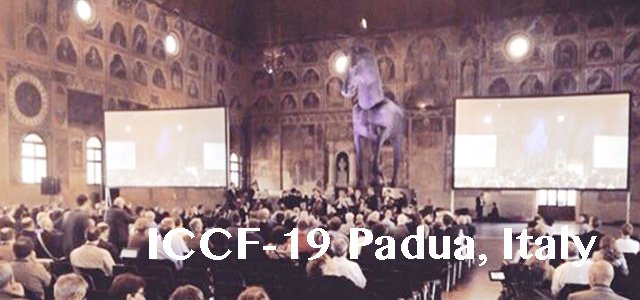
Figure 2. Photograph of some of the attendees at the 19th International Conference on Cold Fusion (ICCF) held April 13-17, 2015 in Padua, Italy.
Perhaps, the most intriguing aspect of the cold fusion (LENR) work is that there appears to be a number of different processes involved in a growing number of reported successful experiments. However, there is not yet an accepted theory that encompasses this work. Nevertheless, young companies are emerging with names like Brillouin Energy Corp. and Industrial Heat that are receiving venture capital support with hopes of becoming the ‘Davids’ who might slay the ‘hot fusion Goliath’ in spite of the U.S. Patent Office’s continued reluctance to grant cold fusion patents.
It’s too early to tell if the Davids will win or even survive. It is also too early to tell if the name change to LENR will work any magic at the patent office. But pressure is building there. A ‘cold fusion’ patent titled FLUID HEATER was actually issued to Andre Rossi (U.S. 9,115,913) on August 25, 2015 using the subterfuge of totally avoiding the use of the words ‘fusion’ and ‘isotope’ that might otherwise raise a red flag leading to rejection. And a patent application (U.S. 14/696423) titled SPONTANEOUS ALPHA PARTICLE EMITTING METAL ALLOYS AND METHOD FOR REACTION OF DEUTERIDES was filed earlier this year by the present author who is a patent agent as well as a Ph.D. physicist. This patent application addresses the reluctance of the patent office to grant cold fusion patents head-on by making a solid case for granting patents on the basis of advancing the state-of-the-art in this field even if an application does not disclose a fully working apparatus.*
And now, eager young students at MIT can take an introductory course in Cold Fusion presented by highly respected faculty members. The chemistry and physics are intriguing, but the secrets of the sun have not yet been fully revealed. So, the big question is will LENR become that disruptive and transforming fusion energy technology or just remain the ‘fiasco of the century’? I believe that it will be big – but stay tuned.
* PERSPECTIVE [Extracted from patent application U.S. 14/696,423]
The inventor is well aware that the subject matter in a patent application must be ‘useful’ and satisfy the requirement of utility. Further, as stated by the U.S. Patent & Trademark Office, “the term ‘useful’ in this connection refers to the condition that the subject matter has a useful purpose and also includes operativeness, that is, a machine which will not operate to perform the intended purpose would not be called useful, and therefor would not be granted a patent”.
In this regard, the inventor makes no claim that the subject matter in this patent application will solve or mitigate the present or future energy problems facing humanity. Nor does the inventor represent that the subject matter in this patent application can be used to produce any commercially useful amounts of energy. Rather, the subject matter is “useful” for two reasons, (1) it would be generally agreed by persons of normal skill in nuclear arts and also based on the teachings of conventional physics that purposely triggering a LENR by employing the subject matter in this patent application would enhance the reaction rate (thereby making the subject matter operative) – even though the magnitude of the enhancement is not presently known, and (2) the subject matter is expected to contribute to a better understanding of the LENR process that will likely continue to be explored by researchers throughout the world for years to come. In this regard, the availability and use of spontaneous alpha particle emitting metal alloys, encouraged by this invention, should be useful in advancing the understanding of LENRs and may also lead to possible future commercial applications. These factors are considered to be more than sufficient to satisfy the criteria of utility.
—Douglas A. Pinnow, Ph.D. Contact

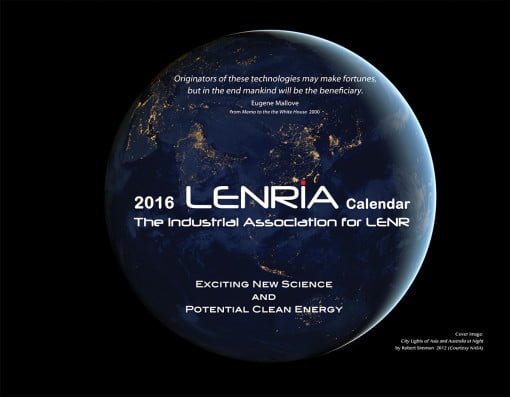

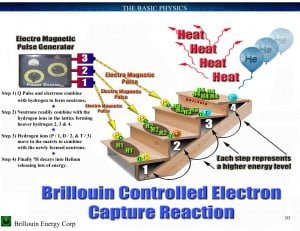

 Lunch Talk at Full Circle Club
Lunch Talk at Full Circle Club